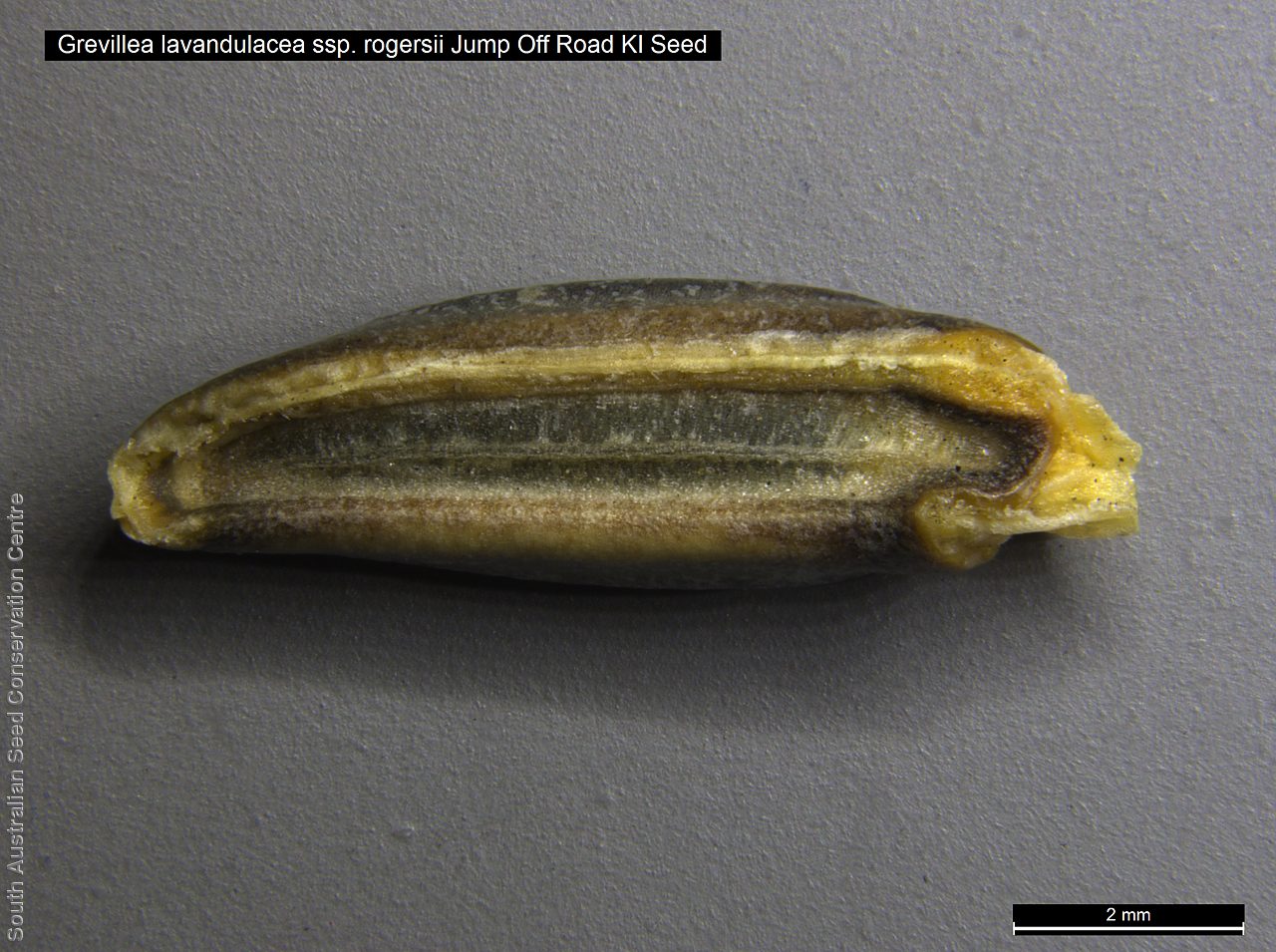













Prior names
Grevillea rogersii
Common names
Rogers' Grevillea
Rogers' Spider-flower
Etymology
Grevillea after Charles Francis Greville (1749-1809), a co-founder of the Royal Horticultural Society. Lavandulacea from the genus Lavandula for lavender, and the Latin '-acea' meaning resembling to, referring to the foliage which was thought to resemble lavender. Rogersii is named in honour of Dr. Richard Sanders Rogers (1862-1942), SA physician and amateur botanist, who collected this species at Cape Borda.
Distribution and status
Endemic to South Australia and found only on Kangaroo Island, growing on calcareous or lateritic sand, in sclerophyllous woodlands. Uncommon in South Australia.
Herbarium region: Kangaroo Island
NRM region: Kangaroo Island
AVH map: SA distribution map (external link)
Plant description
Sprawling shrub to 0.5m high and 2 m wide with hairy stems. Leaves ascending or downturned by the presence of axillary shoots, rigid, linear to 0.8 cm long and to 2.5 mm wide, upper surface tomentose, with the midrib sometimes prominent, lower surface appressed-tomentose but usually obscured by recurved margins, apex acute, grading into a mucro. Inflorecence a raceme, subterminal on short shoots with 1-4 red flowers, with a whitish perianth limb. Flowering between October and November. Fruits curved, narrow-ovoid to 12 mm long, covered by short appressed hairs mixed with some long raised hairs. Seeds are narrow-oblong, with a groove on one side lined by a very narrow wing. Seed embryo type is straight
Seed collection and propagation
Collect seeds between December and January. Collect mature capsules, those that are turning brown or black but have not split, by hands or place small breathable bags over immature capsules or branchlets to collect maturing seed. Place the capsules in a tray and leave to dry for a weeks or two for them to split naturally. Use a sieve to separate the unwanted material. Store the seeds with a desiccant such as dried silica beads or dry rice, in an air tight container in a cool and dry place. This species has morphophysiological dormancy and can be difficult to germinate.
Fire response
Obligate re-seeder.
Longevity: >20 years
Time to flowering: 4 to 5 years
Recovery work
In 2020-2021 this species was assessed post-fire in 1 year old fire scars. Further populations will be assessed and seeds collected on Kangaroo Island in 2021–2022. Germination screening testing the response to fire cues will be undertaken in 2021.This project was supported by the Project Phoenix program.
| Location | No. of seeds (weight grams) | Number of plants | Date collected | Collection number Collection location | Date stored | % Viability | Storage temperature |
|---|---|---|---|---|---|---|---|
| MJH72 | |||||||
| BGA | 300 (7.440 g) | 50 | 2-Dec-2021 | JRG828 Kangaroo Island | 7-Jul-2022 | -18°C |
Number of plants: This is the number of plants from which the seeds were collected.
Collection location: The Herbarium of South Australia's region name.
% Viability: Percentage of filled healthy seeds determined by a cut test or x-ray.